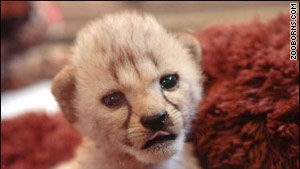UPDATE: Ivan has been returned. The Humane Society said he appears to be in good health but will receive a full check-up. The Humane Society did not disclose the circumstances of Ivan's return.
Humane Society officials are reaching out to the public for help finding a pitbull puppy stolen from a shelter Monday afternoon.
The Washington Humane Society is now offering a $1,000 reward for the return of 4-month-old Ivan. The Humane Society told News4’s Craig Melvin that three men can be seen on surveillance tape walking into the New York Avenue shelter about 2 p.m. Monday.
"These three individuals made their way in to a restricted area. Removed the dog from the rear side of its cage, slipped out through a back gate, and then to finally get out of the enclosed area, kicked their way through a wooden fence," Scott Giacoppo, of the Washington Humane Society, told Melvin.
After snatching Ivan, the men simply sauntered away.
“Like they own the world, they came in, saw what they wanted, walked into a restricted area and grabbed him,” Giacoppo said.
Now employees are worried about what will happen to Ivan, especially with all of the tragic ways they’ve seen animals treated.
“Is he going to be used in dog-fighting activities?” Giacoppo wondered. “Is he going to be used to train other dogs? Is he going to be used for breeding? Is he going to be used as a guard dog?”
The Humane Society hopes that the $1,000 reward will encourage whoever took Ivan to return him so that he can be placed in a safe, loving home.
"Our main concern is the return of Ivan,” Giacoppo told Melvin. “We want to make sure that he gets what he deserves, and that is a loving home and a good family.”
The Washington Humane Society said they are also using this as an opportunity to review their security procedures and the process by which potential pet owners look at the pets.
If you have any information about Ivan or who took him, you can contact the Washington Humane Society
What's on your mind?

